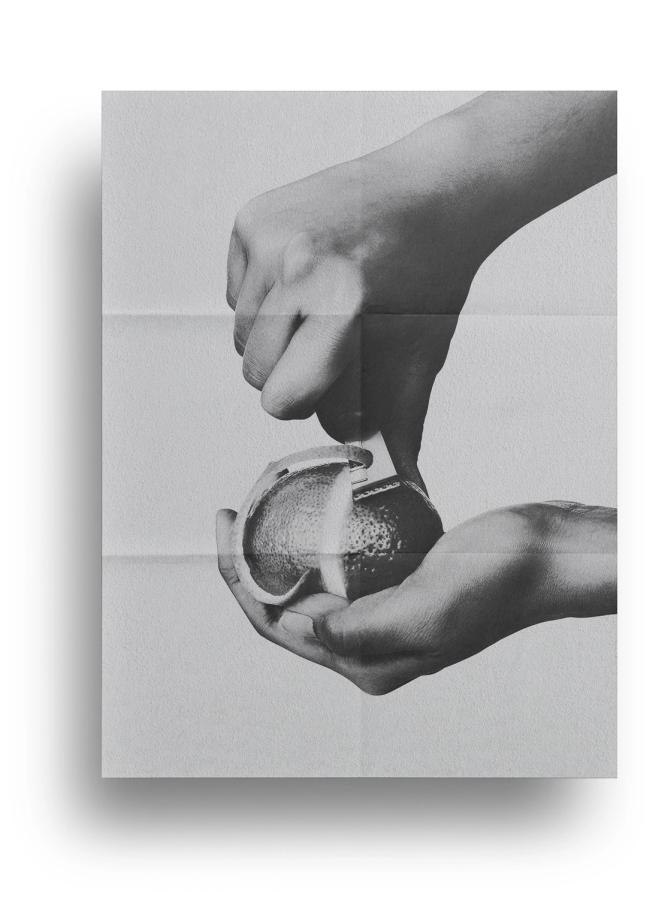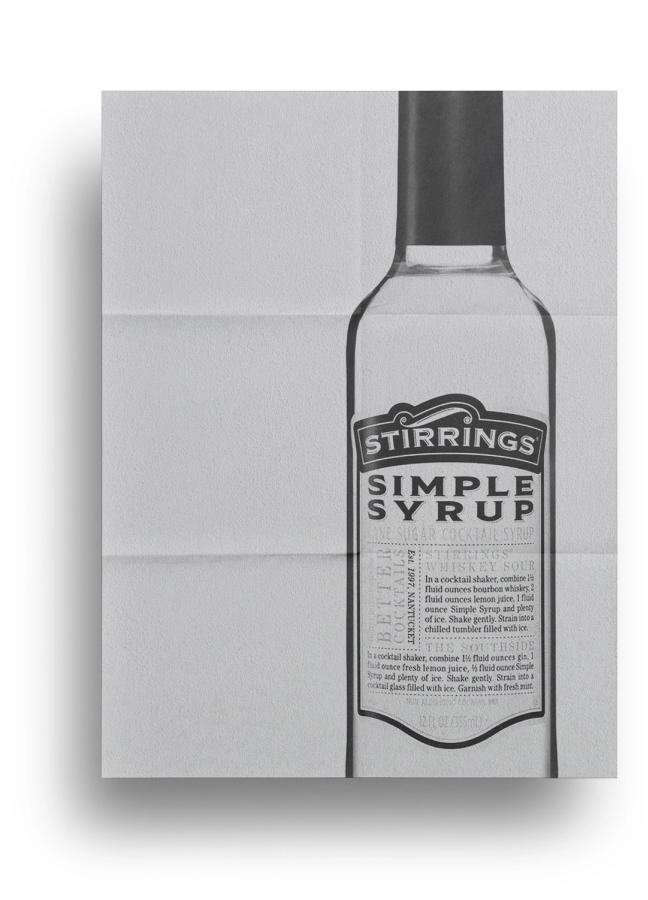The Gentleman’s Journal A-Z of Cocktails
Are you a budding barman? Arm yourself with our freshly-shaken, thoroughly-mixed, alcoholic alphabet of knowledge…
In 1862, bartender Jerry Thomas wrote the first ever cocktail handbook. It was called, somewhat predictably, How to Mix Drinks — although it did go by other titles, including The Bartender’s Guide, and (our particular favourite) The Bon-Vivant’s Companion.
Brimming with booze-soaked stories, creative cocktail recipes and a list of mixed-drink principles, Thomas’ guide was to become a bible for bartenders across the world. But times change, tastes change — and Thomas’ cocktail recipes have spent the last 150 years being tweaked, twisted, shaken and stirred beyond recognition.
That’s why, armed with a deep knowledge of drinking, Gentleman’s Journal has taken an educational spin through an alcoholic alphabet of cocktail equipment and essentials. Updating Thomas’ handbook for the modern man, may we ever-so humbly (and slightly drunkenly) present, the A-Z of cocktails…

A is for Americano, While ‘Absinthe’ may have made for a stronger start, the Americano is little more palatable. It’s also got form going first; in Ian Fleming’s Casino Royale, the first novel to feature James Bond, this is the first cocktail 007 ever sips. Created by combining Campari, red vermouth and soda water, it’s a Martini-beating way to kick off.
B is for Bitters, Neglect them at your peril. Dripped and dropped liberally across cocktail-kind, bitters from Peychaud’s to Angostura are used to balance out flavours and aromas in your mixed drinks — like the seasoning used on your food. And they really do make a difference. Omit them, and you’ll end up with a bitter taste in your mouth…
C is for Channel Knife, One of many bits of cocktail-enhancing kit any discerning drinks-maker should own. Along with the pronged bar knife and multipurpose paring knife, your channel knife is key to creating eye-catching garnishes. Use it to create traditional citrus twists for cocktails including the Old Fashioned (orange) and Martini (lemon).

D is for Daiquiri, Difficult to spell, but easy to drink; the Daiquiri is one of six basic cocktails listed in David A. Embury’s 1948 handbook The Fine Art of Mixing Drinks. Sharing pages with the Manhattan, Martini, Sidecar, Old Fashioned and Jack Rose, the Daiquiri is a simply-shaken combination of white rum, lime juice and sugar. Also Ernest Hemingway’s favourite drink.
E is for Egg Whites, Like the bitters above, egg whites are commonly (and criminally) overlooked in cocktail recipes. But, while Angostura may add flavour to your drink, egg whites add texture. Shaken into cocktails including the Whisky Sour and Clover Club, they can cultivate a creamy mouthfeel and form a foamy luxurious top layer.
F is for Flute, We’ve all got highballs and rocks glasses in our drinks cabinets — but it pays to invest in the more obscure glassware, too. Glassware like a proper ‘flûte à Champagne’; with an inward taper, deep bowl and slender stem. Because a French 75 or Kir Imperial served in a tumbler is a French 75 or a Kir Imperial not worth serving.

G is for Garnish, The final flourish! The finishing touch! The (cocktail) cherry on top! Garnishes are the bells and whistles that help us identify properly-made drinks. Be they mint sprigs, melon wedges, lemon wheels or floating fruits, cocktails that call for these accompaniments and additions are cocktails that go the extra, mouth-watering mile.
H is for Hawthorne Strainer, This is your go-to strainer. There are other types — the Fine Mesh Strainer and the Julep Strainer among them — but nothing comes close to the flexible, coil-fitted Hawthorne design. So-named for The Hawthorne Café in Boston, the coils compress or expand to fit your mixing glass or shaker — giving you a smoothly decanted drink every time.
I is for Ice, Whether cubed, crushed, dry or balled, almost every refreshing cocktail begins with good quality ice. Like your bitters and your egg whites, invest time into making your ice the best it can be — and it’ll pay off handsomely. Our favourite cocktail-specific style of ice? The Collins Spear; an elongated block that chills and thrills in equal frosty measure.

J is for Jigger, Cocktail recipes can be confusing. With many measuring in millilitres, others in ounces and some in shots, your head may start swimming before you’ve taken even a sip. Thankfully, a jigger is a barman’s best friend. Essentially a cocktail measuring cup, these easy-to-use little metal tools will be your dual-sided salvation behind the bar.
K is for Kosher Salt, Some cocktails call for salt. And, whether you’re mixing a Margarita or stirring together a Salty Dog, many of these drinks recipes will ask you to coat the rim of a glass in the savoury stuff. To this end, kosher salt is ideal. With bigger flakes than your average table grains, it’ll add a more punchy, potent flavour — and is much easier to apply.
L is for Liqueurs, And the list of liqueurs is endless. From Belarusian ‘Krupnik’ and Japanese ‘Umeshu’ to the Dutch ‘Parfait d’Amour’, there’s likely been a liqueur made using any flavour you can think of. But these niche, garishly-coloured bottles have their uses — and every home bar should, at least, have some Amaretto, Cointreau and Kahlúa on hand.

M is for Muddling, Most cocktails are crammed with flavour. And, over time, bartenders have amassed tricks and techniques to eke out every last drop of zest and zing from their ingredients. Chief among these methods is muddling; the art or act of mashing fruit, sugar and herbs to extract their aromas and flavours. A simple, pestle-like tool exists for the job — the aptly-named, stubbily-made ‘muddler’.
N is for Nick and Nora, Another glass; the Nick and Nora was named, somewhat eccentrically, after the protagonists of Dashiell Hammett’s 1934 detective novel, The Thin Man. Like the ‘flûte à Champagne’ above, it’s another piece of cocktail glassware that will show you know your alcoholic apples — as it is used to serve more obscure cocktails, including the Tuxedo and the Old Pal.
O is for Old Fashioned, How could it be anything else? Another of David A. Embury’s six basic cocktails, the Old Fashioned was popular when Embury wrote the book on mixed drinks in 1948 — and it still is today. In fact, Drinks International conducts an annual poll to determine ‘The World’s Best-Selling Cocktail’, and the Old Fashioned has topped the list for the last seven years running.

P is for Pourer, File this one under: ‘Cocktail equipment you never knew you needed’. Also known as ‘speed pourers’, these stainless steel spouts have a simple purpose; insert them into the neck of your favourite spirit or liqueur, and they’ll cut down on the time it takes to create a cocktail. Effective, inexpensive — and invaluable to any budding mixology maven.
Q is for Quinine, We wouldn’t class the gin and tonic as a cocktail — but that hasn’t stopped the highball soaring in sparkling popularity of late. Served over ice, the drink hinges on solid, traditional tonic water. And quinine, a natural medicine, is what gives tonic water its characteristically bitter flavour.
And, while UK law may prohibit manufacturers from putting more than 83 milligrams of quinine per litre into tonic water, we say the stronger the better. Fever-Tree currently claims the highest quinine content, with its Premium Indian Tonic Water.
R is for Rum, Because nothing says ‘fun’ like rum. Distilled from fermented sugarcane, this classically Caribbean spirit forms the Barbadian backbone of cocktails from the Mojito to the Mai Tai. And, whether you’re whipping up a Piña Colada or a Caipirinha, it’ll always deliver. The low-key MVP of your drinks cabinet; it’s deliciously simple, perfectly sweet — and runs over with sugary, sippable spirit.

S is for Simple Syrup, While we’re on the subject of sugar, let’s whip up a batch of simple syrup. An easy-to-make, can’t-live-without addition to any mixologist’s arsenal, this sugary essential is as basic as its name suggests. Half-water, half-sugar; it’ll keep for months — and will add a slick, sweet touch to cocktails from Mojitos to Old Fashioneds.
T is for Twist, Reach for your channel knives — because it’s twist time! If you’re going to learn to make just one type of garnish, make it these decorative strips of citrus zest. They’re versatile, delicate and downright transformative when perched on the edge of a glass. And, intended to release the oils of fruit directly into your cocktail, they’re more than just a pretty, bitter face.
U is for Umbrella, Cardinal cocktail sin, or genuinely practical piece of equipment? We’d argue the latter. They may look fun and fruity, but — when Hilton Waikiki bartender Harry Yee invented these small paper parasols in 1932 — it was for a very real reason; to stop the harsh Hawaiian sun melting the invigorating icy slush of guests’ frozen cocktails.

V is for Vesper, The most famous spin on the most famous cocktail. After James Bond sips an Americano in 1953’s Casino Royale, he goes on to invent a new Martini recipe. “Three measures of Gordon’s,” 007 orders, “one of vodka, half a measure of Kina Lillet. Shake it very well until it’s ice-cold, then add a large thin slice of lemon peel. Got it?”
W is for Whisky, Whisky can be risky. Varieties include barley, corn, rye and wheat — and you must learn the difference. Because using the wrong whisky in a cocktail will tank even the most cautiously-created drink. We’d recommend buying one sweet bourbon, one smoky Scotch and one reliable rye whiskey for your home bar.
X is for Xtabentún, ‘X’ was always going to be a problem. We almost went for the Xanadu; a cocktail made using white rum, lime juice and guava nectar. But instead, we’re turning this troublesome letter into a teachable moment. Xtabentún (pronounced ‘shtab-en-toon’) is a Mexican anise liqueur created using fermented honey, and can be mixed with tequila to create a cocktail called a Mayan Coffee. Who knew?

Y is for Y-Peeler, From your pourer to your jigger, we’ve introduced you to some handy bits of bar kit. Another indispensable implement is a peeler — perfect for creating garnishes from swathes to spirals. But not all peelers are born equal. For maximum efficiency, avoid knife-like ‘straight’ peelers and find a trusty Y-shaped swivel peeler, with a blade perpendicular to its handle.
Z is for Zombie, The Zombie is a fitting finish — as it throws the whole drinks cabinet at one cocktail. Created in 1934 by tiki barman Donn Beach, this cacophonous, chaotic drink is a mix of multiple rums, aniseed liqueur, cinnamon syrup, Grenadine, Angostura bitters, lime juice, grapefruit juice and something called ‘falernum’. Oh, and absinthe — which brings us full-circle and back to our first letter.
So go forth and mix, gentlemen — armed with your freshly-shaken, thoroughly-mixed, alcoholic alphabet of new knowledge.
Want more drinks inspiration? Here are the favourite cocktails of 8 style icons…
Become a Gentleman’s Journal member. Find out more here.

Become a Gentleman’s Journal Member?
Like the Gentleman’s Journal? Why not join the Clubhouse, a special kind of private club where members receive offers and experiences from hand-picked, premium brands. You will also receive invites to exclusive events, the quarterly print magazine delivered directly to your door and your own membership card.
Further reading

Restaurant review: with ABC Kitchens, Jean-Georges Vongerichten produces yet another multi-layered venture

Defined by power and body, this is why the Penfolds Bin 707 is analogous to a jumbo jet
